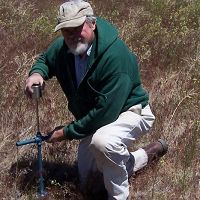Johnson et al., 2010
Nutrient hot spots in some Sierra Nevada forest soils.
Johnson, D.W., Glass, D.W., Murphy, J.D., Stein, C.M., Miller, W.W. (2010)
Biogeochemistry 101: 93-103.
-
Sierra, INVESTIGATOR
-
Sierra, COLLABORATOR
Abstract
Re-examination of data distributions from several forested sites in the eastern Sierra Nevada Mountains shows consistent, positive outliers and skew for NH4 +, NO3 −, and mineral N in resin lysimeters and resin capsules, indicating that most values were low but hotspots of high N flux were present in most cases. Exact causes of these N flux hotspots is not known, but could include water flux hotspots (e.g., preferential flowpaths), microbial hotspots, and possibly the entry of N-enriched O horizon interflow. Soil and resin stake (PRS probe) data from one site (North Lake Tahoe) also showed consistent, positive outliers and skew for NH4 +, NO3 − , and mineral N, suggesting the presence of microbially produced hotspots. Bicarbonate-P data from soils and ortho-P data from PRS probes also showed highly positive skew and extreme outliers, but Bray (HCl/NH4F-extractable) P in soils did not. Other measured nutrients (extractable Mg2+, K+, SO4 2−, and Ca2+) also showed positive skew and outliers, but less so than NH4 +, NO3 −, and mineral N. Calcium stood out among measured nutrients as the most abundant nutrient with the least outliers and the lowest (sometimes negative) skew. The differences in distributions of NH4 +, NO3 −, and mineral N and those of Ca2+ may reflect relative abundance: the most abundant ion, Ca2+, shows little evidence of hotspots whereas the much less abundant ions, NH4 +, NO3 − consistently show evidence of hotspots. We hypothesize that the differing distributions of N and Ca reflect the relative biological competition for these nutrients and that positively-skewed distributions and hotspots will be characteristic of any other nutrient when it is in limited supply relative to biological demand.
Citation
Johnson, D.W., Glass, D.W., Murphy, J.D., Stein, C.M., Miller, W.W. (2010): Nutrient hot spots in some Sierra Nevada forest soils. Biogeochemistry 101: 93-103.. DOI: 10.1007/s10533-010-9423-8
 This Paper/Book acknowledges NSF CZO grant support.
This Paper/Book acknowledges NSF CZO grant support.
Explore Further


